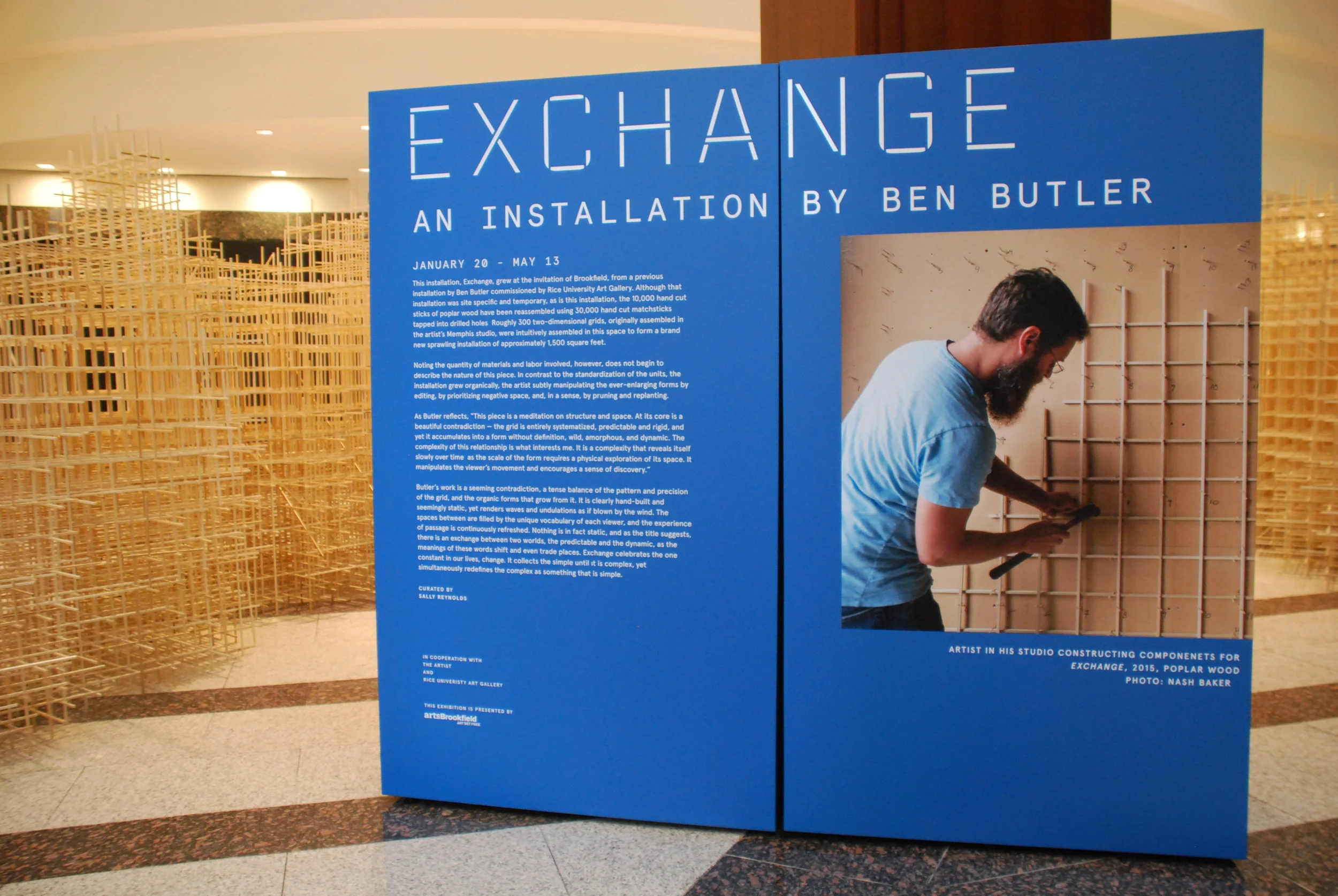The Legacy of John Biggers
January 11–April 3, 2017
Born in Gastonia, North Carolina in 1924, the youngest of seven children, John Biggers lived at a time when the small community provided the oversight and support to all who belonged. His close knit family protected and nourished one another, and the family provided guidance at a time when racial relations were disturbing and challenging. John Biggers attended Hampton University where he met his wife, Hazel. It was there he fell under the superb guidance and focused support of the Chairman of the Art Department, Dr. Viktor Lowenfeld. John Biggers remembered Lowenfeld: “He taught us that art was a way for all people to speak. There is no censorship in art. Discrimination, restrictions, almost anything could be overcome with art, with self expressive thought.” (Houston Post, November 17, 1968, p.21).
John Biggers followed Viktor Lowenfeld to Pennsylvania State University and there received his three academic degrees; Bachelor and Master Degrees in Science in Art Education, and a Doctorate in Art Education. In August, 1949, he and his wife came to Houston. He had been asked to begin an art department at Texas State University for Negroes, later to be named Texas Southern University. Biggers, thoughtfully and with great purpose, designed a vital and transformative department of art, and he began by recruiting one student at a time. As they assembled that first day, they were told each would have to furnish his own materials and equipment. In 1952 the student, Abraham Washington, painted the first mural on the third floor of the newly constructed Hannah Hall. So began the tradition of the extraordinary student murals painted on the walls of several university buildings.
Biggers provided his students with hands on instruction. He challenged them to move beyond what they thought they could do. He challenged them to justify what they were doing, to handle and understand their materials, to make their own paint colors, not to accept the tube color if it wasn’t right, and to express themselves in their own medium. He had a broad vision and the art department came to encompass painting, drawing, composition, printmaking, weaving, ceramics, sculpture and housed a photographic laboratory.
In 1957, sponsored by a UNESCO travel fellowship, Hazel and John Biggers traveled to Ghana, Togo, Benin, and Nigeria. And so began a transformative encounter with the land and the people of Africa. Drawn into the spirit and the heart of the people, both grew in their understanding and in their profound appreciation of the mythologies, the parables, the unrelenting unity of nature, all of which depicted the interconnected life forces of all living things. From this journey came the book, Ananse — The Web of Life in Africa, which John Biggers wrote and illustrated. Biggers recounts, “Ananse is the spider, a heroic character in African folklore. Like Br’er Fox, he outwits all the other creatures of the forest. He depicts every kind of hero. There is an Ananse story for every situation in life. God gave Ananse the meaning of order. He taught him architecture, the structure of dwellings, and the structure of life and society. This is symbolized by his web, which stands also for the sun and its rays, and the sun personifies God.”
John Biggers left a legacy for all of us, in his works and in the works of his students. They are his legacy. Their insight, their spirit, their tenacious commitment of each to his and her unique creativity continues to inform us that art is life. It is in the perseverance of our dreams that we live the life we imagine. On the wall of his studio, John Biggers had a sign, On My Journey Now. As are we all.
Curated by Sally Reynolds
On My Journey Now — The Legacy of John Biggers has been supported through the efforts and the generosity of University Museum at Texas Southern University: Alvia J. Wardlaw, Ph.D., Director/Curator and Monica Vidal, Museum Registrar, Rev. Dr. Marcus D Cosby, Charles Criner, Drs. Jean and Robert Galloway, Earlie Hudnall, Jr., Herbert and Ava Jean Mears and Family, Michelle Barnes, Wanda Kissentanner, Eugene Foney, Sarah Trotty
and The Artists: John Biggers, Charles Criner, Diedre Curnell, Karl E. Hall, Earlie Hudnall, Jr., Harvey Johnson, Earl Jones, Josie Mendoza, Robert Meyers, Edward Mills, Trudell Mimms Obey, Katie Oliver, Kermit Oliver, Willie Mo'e, Annie Moore, Robert Pruitt, Bert Samples, Elizabeth Montgomery Shelton, Jesse Sifuentes, Charles L. Thomas, Roy Vinson Thomas, Roy Williams, and Henry Wilson
Introduction wall photograph: Earlie Hudnall, Jr.
Photographs by Dawn Baxter
























































































































































